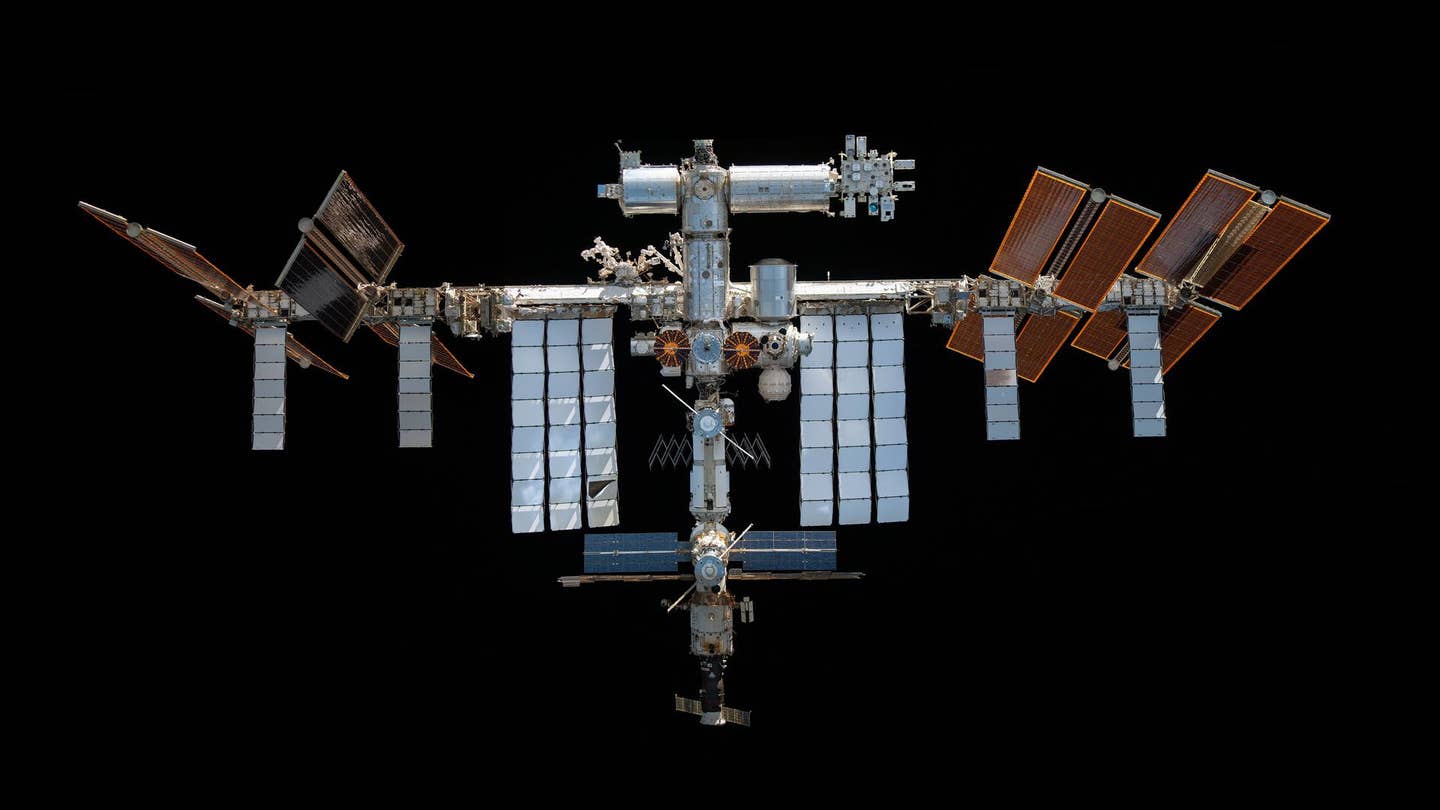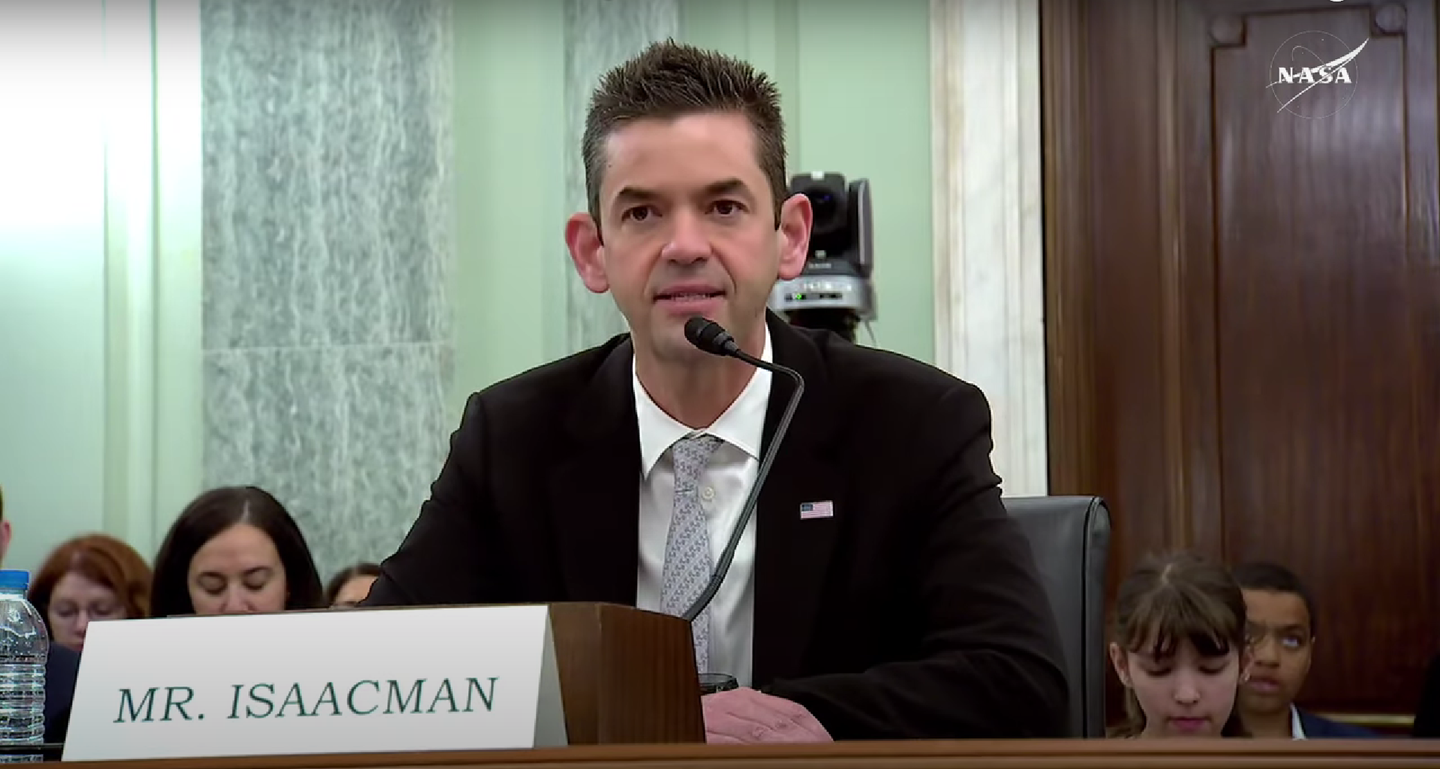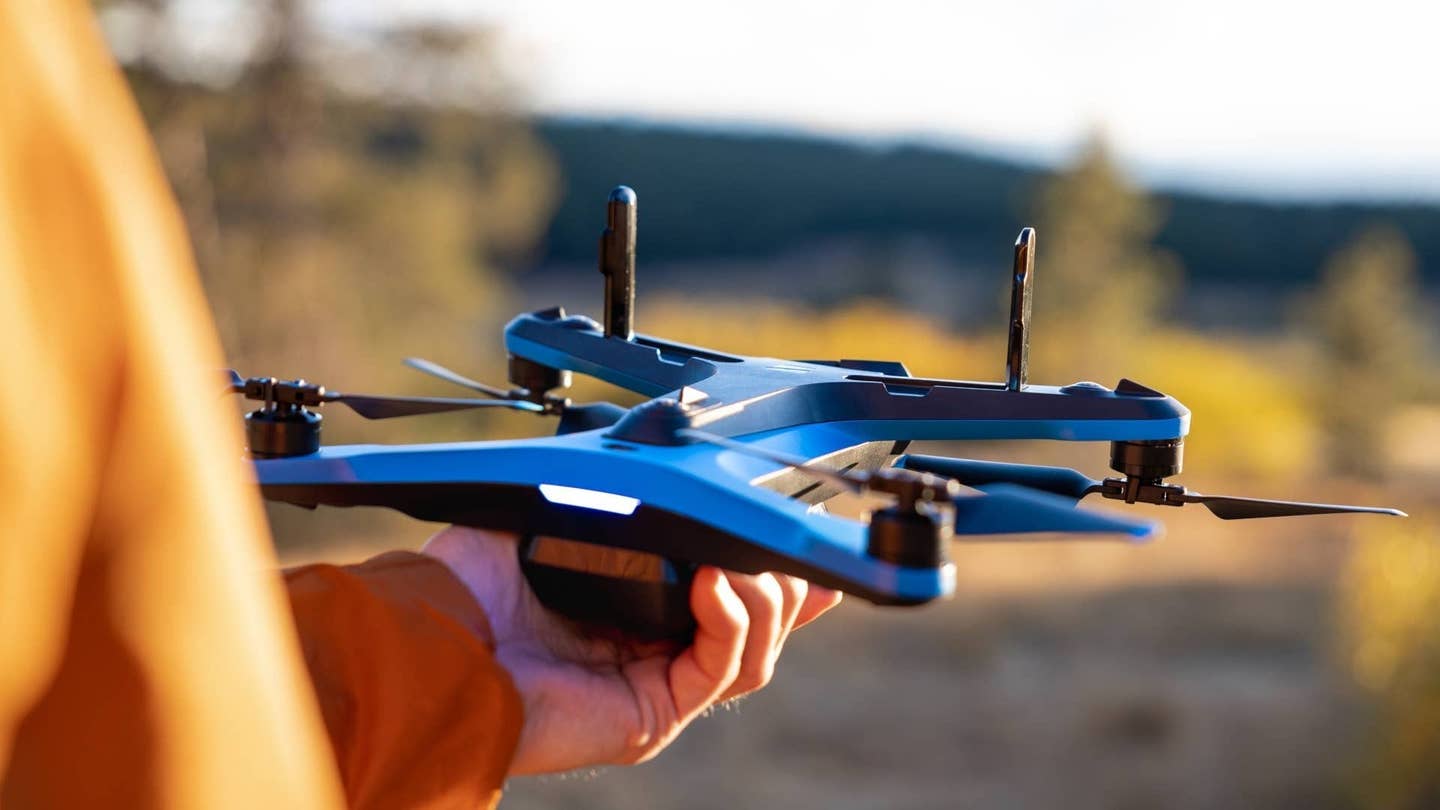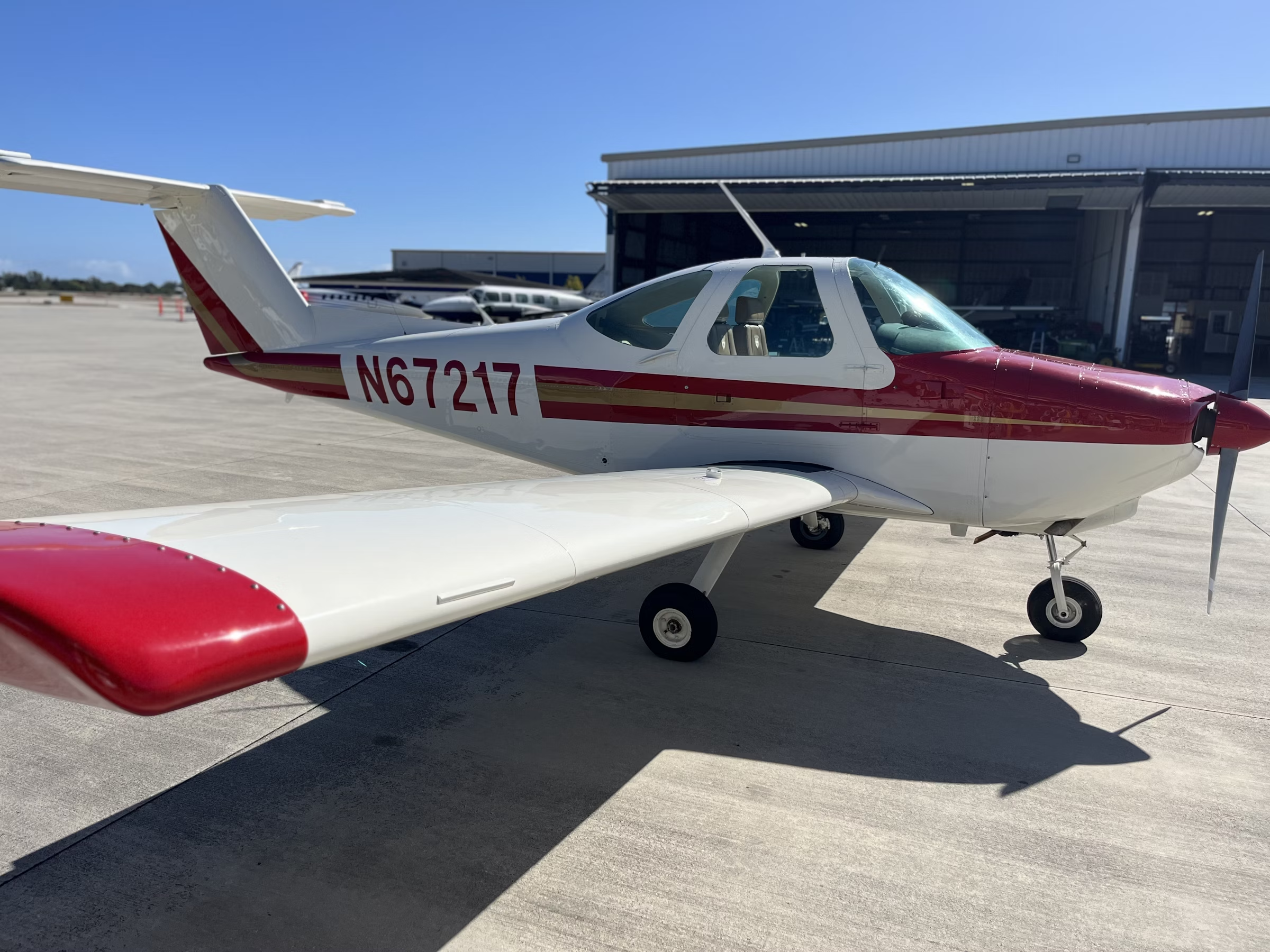NASA, SpaceX Share Details on Plan to Destroy ISS
No existing spacecraft meets the propulsive needs of the U.S. deorbit vehicle, which will bring the International Space Station back to Earth.

SpaceX will design and build the deorbit vehicle that brings the International Space Station home in pieces. [Courtesy: NASA]
On Wednesday, officials from NASA and SpaceX shared new details on their plan to deorbit and dismantle the International Space Station (ISS) at the end of the decade.
NASA in June awarded SpaceX a contract, worth up to $843 million, to design and build the U.S. deorbit vehicle (DV) that will drag the massive laboratory to its final resting place in a remote section of the ocean. No existing spacecraft has the capabilities required to complete the mission.
Ken Bowersox, associate administrator of NASA’s Space Operations Mission Directorate, Dana Weigel, manager of the space agency’s ISS program, and Sarah Walker, director of mission management for SpaceX’s Dragon spacecraft, provided more details on the tall task at hand for SpaceX and predicted what the space station’s final days might look like.
According to Weigel, the U.S. DV contract is different from previous SpaceX contract awards. These have typically been end-to-end, where SpaceX oversees everything from launch through operation. This time, the manufacturer will simply deliver the vehicle for NASA’s use. The contract also has a dwell in storage requirement, which calls for SpaceX to deliver the DV early enough for NASA to perform checkouts prior to launch.
NASA will also need to secure a launch provider for the spacecraft. Walker on Wednesday appeared to throw SpaceX’s hat in that ring as well, saying the company would welcome the opportunity if it arose. NASA uses the firm’s Falcon 9 rocket routinely and has plans to deploy its Falcon Heavy model in the future.
Before Wednesday, little was known about the design of the deorbit vehicle. Officials revealed that it will be a heavily modified version of the company’s Cargo Dragon model, which flies routine ISS resupply missions, but with a specially designed trunk containing propellant, avionics, and more. Walker referred to it as “basically another spacecraft” that will be twice as large as a typical Dragon trunk. The capsule will be pulled from the existing Dragon fleet, and the trunk will be attached.
Walker said the DV will require six times as much useful propellant and three to four times as much power generation and storage. It will also need enough propellant to fly to orbit and operate for several months before completing its mission. By Weigel’s estimate, the vehicle will have a wet mass north of 30,000 kilograms.
NASA was lured by SpaceX’s proposal in part because Dragon is flight-proven hardware—in other words, the agency is familiar with the spacecraft and its systems. Like Dragon, the DV will feature SpaceX Draco engines—46 of them, with 16 on the capsule and 30 in the trunk. About 25 of these will fire at once during the final ISS reentry burn.
In another similarity to Dragon, the vehicle will include both manual and automated functions. Weigel said NASA expects to lose communications during the final four days or so of the mission, during which time the DV will need to manage all onboard tasks.
All of these requirements have driven up the spacecraft’s price, with Bowersox estimating it to be around $750 million. He said that NASA must secure a total of $1.5 billion to cover the DV, launch vehicle, and mission operation, and has asked for $180 million in a supplemental budget request to Congress. If it cannot secure the necessary funding, the money will need to come from NASA’s budget, which Bowersox said could affect ISS operations.
Officials said that projects as complex as the deorbit vehicle concept typically spend five to eight years in development. Per Weigel, the plan is to deorbit the ISS in 2030 for a splashdown in 2031, which would require the DV to launch about one and a half years earlier.
Most of the orbital lab is expected to melt, burn up, or vaporize during its controlled reentry. Weigel said teams have yet to determine where the wreckage will land but that it will be in a remote section of the ocean—potentially the South Pacific—within a narrow area 2,000 kilometers long. She characterized the operation as common for a vehicle as large as the ISS.
The DV will launch and dock to the ISS before the space station uses onboard propulsion to lower its orbit, allowing it to drift closer to Earth. Roscosmos Progress spacecraft may also assist in the maneuver.
Crews will vacate the lab about six months before its retirement. As the ISS approaches an altitude of 250 kilometers, the DV will place it on the proper trajectory and initiate one final burn to bring it home. It will use a massive amount of thrust—enough to drag the massive satellite while resisting drag from atmospheric forces.
Though the DV is being specially designed to deorbit the ISS, Walker did not rule out the possibility that it could find new life with NASA through future applications.
“Anything’s possible,” she said.
As for the ISS, Bowersox said crews will salvage as much as they can, including scientific instruments and mementos such as ship’s logs, despite there being no dedicated recovery mission. The station’s remnants will be divided among the U.S., Canada, Japan, Russia, and the European Union, whose space agencies have continuously occupied it for nearly a quarter of a century. The five agencies share responsibility for safely deorbiting the ISS.
According to Bowersox, all five partners agreed on the U.S. DV concept as the right spacecraft for the mission. However, the mission has not yet received formal approval and could be modified based on feedback.
The hope, Bowersox and Weigel said, is that the ISS deorbit timeline aligns with the launch of a new generation of commercial space stations. NASA has awarded contracts to four firms—Blue Origin, Axiom Space, Northrop Grumman, and Starlab Space, a joint venture between Voyager Space and Airbus—to develop ISS replacements that will be open to federal agencies and private companies alike. The officials said they envision NASA eventually becoming one of many customers in a commercial space ecosystem.
Bowersox predicted that a further extension of the space station’s lifespan is unlikely. In the event that it is retired before commercial alternatives come online, he said NASA will take “whatever steps we could to minimize the impact of that gap.”
In the meantime, the space agency is focused on getting as much as they can out of the space station’s remaining lifecycle, including research that will inform Artemis missions to the moon and beyond. If the deorbit mission goes smoothly, NASA activities shouldn’t miss a beat.
Like this story? We think you'll also like the Future of FLYING newsletter sent every Thursday afternoon. Sign up now.

Sign-up for newsletters & special offers!
Get the latest FLYING stories & special offers delivered directly to your inbox






